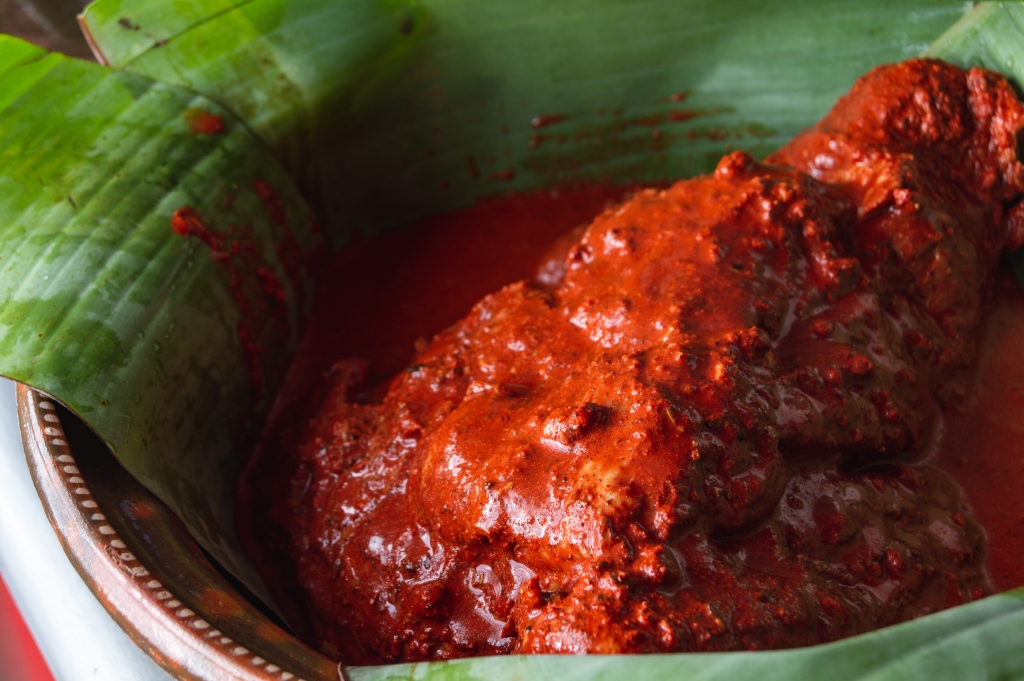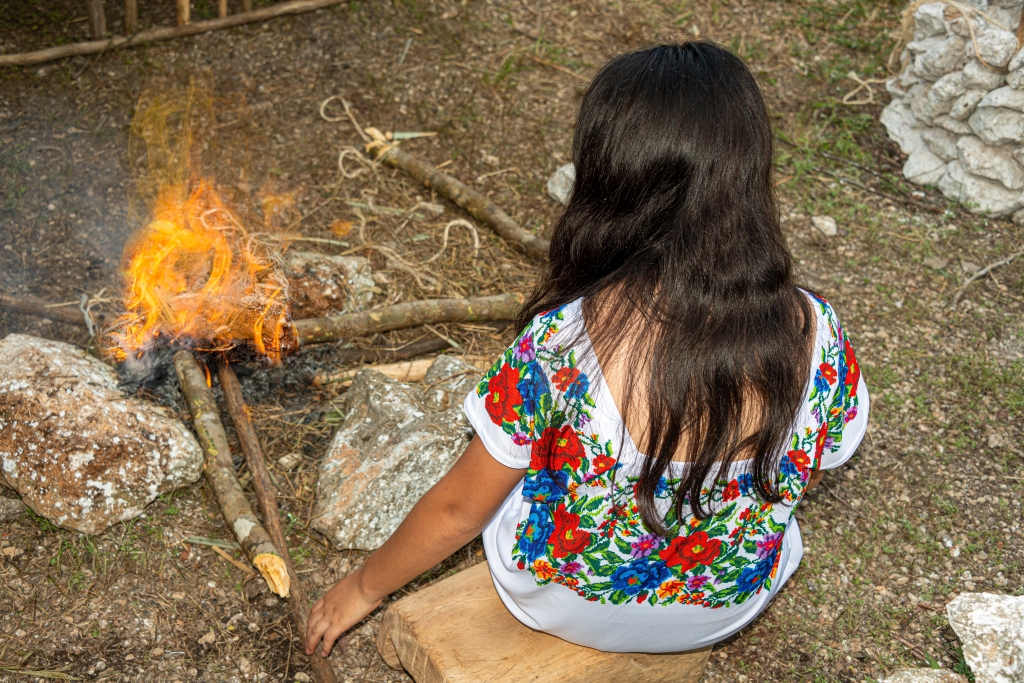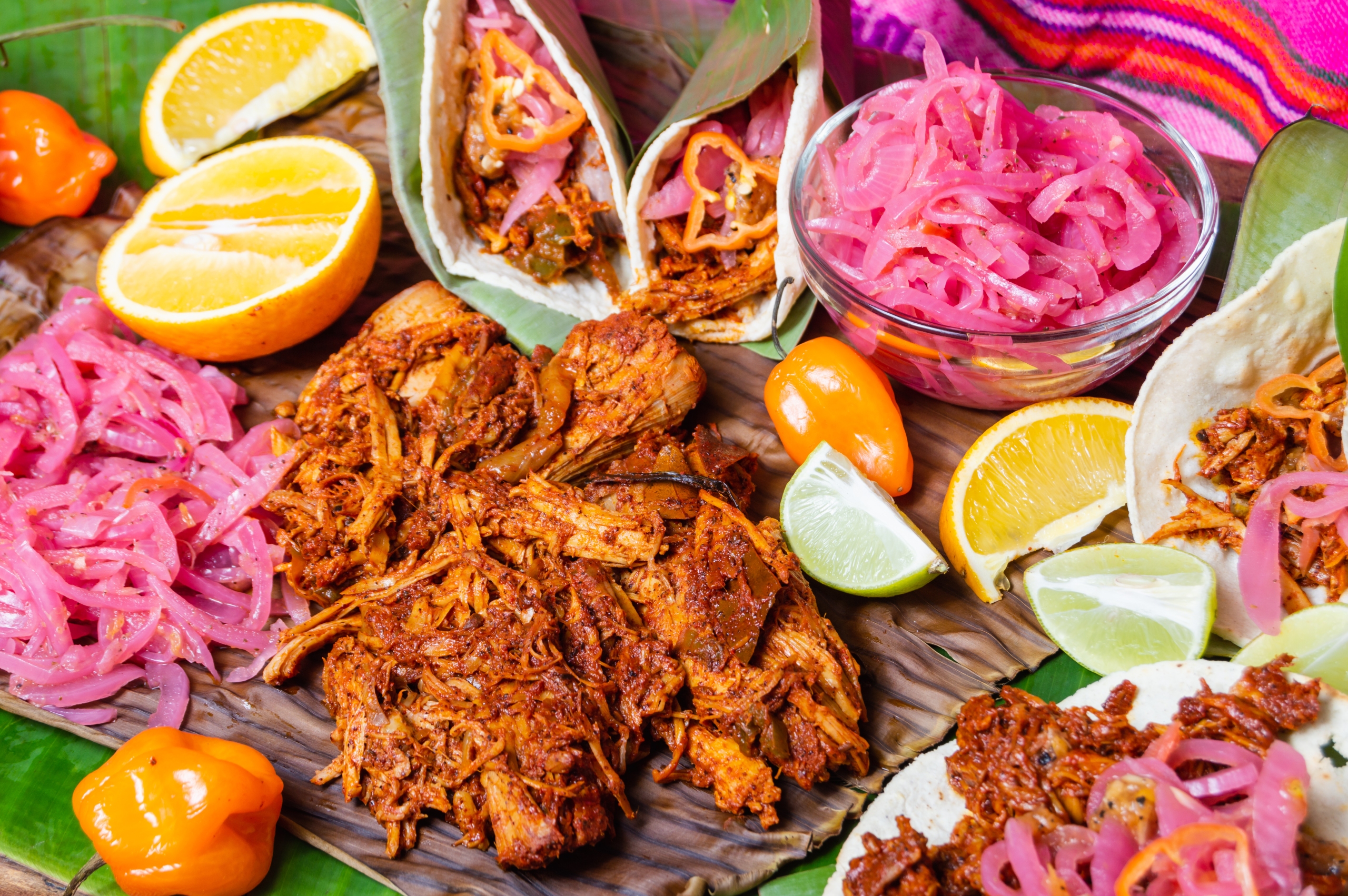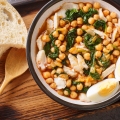Deep in the heart of Mexico’s Yucatán Peninsula lies a culinary secret that dates back thousands of years. Cochinita pibil is more than just a dish—it’s a testament to the cultural resilience of the Maya people and remains a cherished part of the region’s cuisine.
Picture the early morning sun filtering through the ceiba trees as Doña Rosa lights a fire in her backyard in Mérida. Just like her grandmother once did, she prepares the pib – a traditional earth oven that brings to life the most authentic cochinita in all of Yucatán. Yes, this still exists today!
Deep Roots of Tradition
In pre-Hispanic times, the predecessor of cochinita pibil was a Maya stew made with pheasant, wild boar, or deer, slow-cooked in a pib, or earth oven. The ancient Maya mastered the technique of burying food in a pit oven—pib literally means “buried” or “earth oven” in the Maya language.
But this was more than just a way to cook. It was a communal ritual that brought Maya communities together during festivals, weddings, and religious ceremonies. Each family contributed ingredients and labor, while the food cooked slowly underground.
Then came the Spanish conquistadors in the 16th century, bringing with them a new animal: the pig. The Maya quickly adapted their traditional cooking techniques to this new ingredient, giving birth to cochinita pibil—a brilliant example of culinary fusion between ancient Maya wisdom and European imports.

The Red Heart of the Recipe: Achiote
At the center of this rich culinary heritage is achiote, the seed of the Bixa orellana plant. The Maya used it as both spice and dye – for food, body paint during rituals (especially those invoking rain), and even as a symbolic stand-in for blood.
This tropical plant yields red-orange seeds used for everything from ceramic pigment and building materials to sacred ink. In food, it adds a visual vibrancy and an earthy, spicy complexity that makes the meat glow with sacred fire.
Achiote gives cochinita pibil its signature reddish-orange hue, but its contribution goes far beyond aesthetics. The flavor is complex: slightly bitter, with hints of nutmeg, pepper, and a smoky aroma that seeps deep into the meat.
The Art of Traditional Preparation
The traditional method for making cochinita involves marinating pork in highly acidic citrus juice, mixing in annatto seeds for that burnt-orange color, and roasting the meat in a pib while wrapped in banana leaves.
The process starts with selecting the right cut. Traditionally, a whole suckling pig was used, but today, pork shoulder or leg is more common. The meat is cut into generous portions and soaked in a marinade that demands patience and respect.
The marinade is a perfect balance of tangy and spicy. Yucatán’s bitter orange (naranja agria) is key—not only does it tenderize the meat, but it also provides a tartness that cuts through the richness of the pork. If bitter orange isn’t available, a mix of sweet orange and lime can be used.
The achiote is ground into a paste called recado rojo, mixed with garlic, vinegar, oregano, cumin, and other local spices. This fragrant red paste becomes the aromatic heart of the dish, infusing the pork over hours of marination.
The Ritual of the Pib
Cooking in a pib is an unforgettable experience. A pit is dug in the ground, hardwood is burned, and volcanic stones are placed over the flames. Once the stones are red-hot, the fire is removed, and the embers swept away.
The marinated meat is wrapped in banana leaves, which act as a natural vessel and add a subtle, tropical aroma. The bundle is placed on the hot stones, covered with more banana leaves, and then buried under earth. The residual heat cooks the meat slowly over 6 to 8 hours.
This underground method creates a unique environment: steady heat, high humidity, and no oxygen. The result is meat so tender it falls apart with a touch, infused with the rich flavors of the marinade and banana leaves.
Cochinita for Hanal Pixán

Even before the Spanish arrived, cochinita-like dishes were prepared for Hanal Pixán—the Maya Day of the Dead—or offered to the gods during major celebrations.
Between late October and early November, the Yucatán still celebrates Hanal Pixán, which means “food for the souls.” It’s the Maya version of Día de Muertos, and cochinita takes on a deeply spiritual role.
A special variation called mucbilpollo is prepared for the occasion: a savory corn dough pie stuffed with pork and chicken, cooked underground just like cochinita. It’s placed on home altars as an offering for the departed.
A Modern Evolution of an Ancient Tradition
Today, cochinita pibil has gone far beyond its regional roots to become an icon of Mexican cuisine. In the streets of Mérida, street vendors serve it hot in corn tortillas, topped with pickled red onions and fiery habanero salsa for the bold.
The word cochinita means “little pig,” and comes from cochi, meaning “the one who sleeps”– a nod to how the indigenous people observed pigs dozing off after eating. This linguistic detail reflects the depth with which the Maya understood these new European animals.
In the modern restaurants of Mexico City and Cancún, cochinita has undergone a gourmet transformation. Creative chefs reinvent it in fusion tacos, as elegant entrees with foam and reduction sauces, or stuffed into sophisticated empanadas.
A Living Heritage
Despite globalization and modern trends, Yucatán remains one of the few places in Mexico where cochinita pibil is still prepared the traditional way. Families like Doña Rosa’s keep ancestral techniques alive, passing down knowledge from generation to generation.
Each family has its own secret version. Some add cinnamon to the marinade, others wrap the meat in orange leaves along with banana leaves, and some even substitute part of the pork with turkey (cochinita de pavo). These variations don’t betray tradition – they enrich and sustain it.
Cochinita pibil is a perfect example of how culinary culture serves as a bridge between past and present. It’s a dish that tells the story of a people – their beliefs, creativity, and resilience.
A Global Cultural Impact
Cochinita pibil gained international fame thanks to Quentin Tarantino’s Once Upon a Time in Mexico, where Johnny Depp’s character is obsessed with the dish. While this Hollywood portrayal simplified it, it sparked curiosity around the world.
But the real cochinita pibil isn’t found in upscale restaurants. It’s found on the street, wrapped in newspaper, eaten with your hands, dripping with red-orange sauce, and bursting with ancestral flavor.
More Than a Dish – A Legacy
In its tender texture and rich taste, cochinita pibil holds the soul of Yucatán. It’s the sacred fire of the Maya, still burning underground, transforming humble ingredients into an experience that touches all the senses – and nourishes the spirit.
When you taste authentic cochinita pibil, you’re not just eating. You’re participating in a ritual that spans centuries. You’re honoring the wisdom of a people who turned survival into celebration – and necessity into art.
It’s the ancestral soul of Yucatán that still beats strong, a red heart pulsing with history and flavor.





